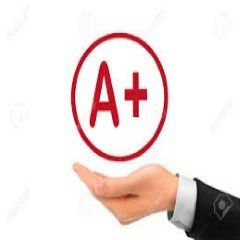Question: #6237
Research question
- Write an Introduction describing your topic.
- Write the Statement of the Problem section.
- Describe the Purpose of the Study. Include the results of your power analysis.
- State your Research Question and your null and alternative hypotheses. Be sure that your question aligns with your purpose.
- Write a Brief Review of the Literature.
- Complete the Research Methods section (including the Operational Definition of Variables, Constructs, and Measurement sub sections). Follow the instructions in the CP template. Be sure to:
- Identify the strengths and weaknesses of your envisioned design and methods.
- Identify threats to validity and how your design will address them.
- Justify why your chosen design and methods are more appropriate for your research question than alternatives you have considered.
- Define the constructs you will measure and what you will do in order to determine how to operationalize them.
- Describe the sample you propose to study and its characteristics; this should include, but is not limited, to: 1) age; 2) gender; 3) ethnicity; 4) additional cultural factors; and 5) education level. Justify your choice of sample.
- Describe your method of sampling.
- Describe the type of data you need to collect and how you will collect it.
- Briefly describe any ethical issues you foresee with your study. Make a preliminary assessment of the level of risk associated with participation in your study that might need to be raised with the Institutional Review Board.
- Describe and justify how you will analyze your data and the descriptive statistics will you present.
- Explain how you conducted your power analysis.
- Describe how you will handle your data, check for accuracy etc.
- What problems do you foresee in implementing the design? How might you prevent them?
Support your paper with a minimum of 7 resources. In addition to these specified resources, other appropriate scholarly resources, including older articles, may be included.
Solution: #6260
quality original work
Balancing the business budget against technological changes Student’s name Professor’s name, Course title Date Balancing the business budget against technological changes A budget can be defined to as a systematic method of allocating financial, physical, and human resources to achieve strategic goals. Companies develop budgets in order to monitor progress toward their goals, help control spending, and predict cash flow and profit. Technological advancements have shown to have major effect on the budgetary controls of various firms as well as a country at large. The central challenge that budget developers face is mapping out the future, something that can never be done with perfect precision. The fast pace of technological change and the complexities of global competition make developing effective budgets both more difficult and more important. The financial services industry is undergoing rapid technological changes with frequent introductions of new technology-driven products and services. In addition to serving clients better, the effective use of technology may increase efficiency and may enable financial institutions to reduce costs. Our future budget balance will depend, in part, upon our ability to use technology to provide products and services that provide convenience to customers and to create additional efficiencies in operations (Lazzarotti, Manzini & Pellegrini, 2011). We may need to make significant additional capital investments in technology in the future, and we may not be able to effectively implement new technology-driven products and services. Many competitors have substantially greater resources to invest in technological improvements (Atkins, 1950). Technological advancements are already having a large impact on business budget balance, as most companies have recognized the value of having an updated website and other on-line resources. As changes in technology allow the Internet to become more interactive, businesses will have the opportunity to interact more directly with their fellow employees, their competition and their customers. This change could help the business world become more transparent, leading to budget growth and development that will benefit the company, workers and anyone who needs the services they provide (Krueathep, 2010). In the specific context of technological change, research has shown that analysts react positively to firms’ strategies that maintain and extend an old technology in budgetary balance, but they ignore or are even negative toward strategies to respond to a new, potentially substitute technology that usually helps in the balancing of the budget. However, researchers have not studied whether and how these technology advancements from analysts in turn affect firms’ strategies as the radical technological change unfolds. This paper study how firms simultaneously manage the divergent technological and budget balance that are triggered by a major technological change. The paper will focus on the technological pressures that call for firms to invest in new technologies thereby enabling them to manage their budget adequately. In the face of a major technological change, the incumbent firms in an industry likely face strong technical pressures for adaptation and survival, necessitating strategic changes and investments in new knowledge and capabilities. But radical shifts in technology also increase uncertainty about the future value of firms, and more specifically, about the value of the strategic investments that they undertake to respond to a new technology and hence the budgeting plans. Thus, technological change can create tension between the technical and institutional pressures facing managers, as actions to respond to the new technology may conflict with analysts’ beliefs and expectations about value creation and hence the budget balance. The potential for divergence between analyst beliefs and firm actions is heightened during periods of technological change, as such changes both increase the uncertainty about the future value of firms’ investments and make their potential payoffs more distant in time. Although managers are interested in the long term success and survival of their particular firms and may prepare a budget that have more distant benefits which investors can diversify their portfolios and need not be concerned with the survival or adaptation of any specific firm. The purpose of this study, then, is to explore ways in which technological advances affect the budgetary balance of a company. Specifically, the study will focus on two main objectives:To determine the relationship between budget balance and technology changes for self-reflection of a company. Also the study will also help in determining the extent to which components of technology combine with selected demographic variables affect the budget. Lastly we will examine various methodological and substantive considerations in changing technology. The efficiency and effectiveness of the operations of a business depends on the control available to management in almost every business organization, there are a number of activities going on at the same time such as producing, purchasing, distributing, selling and financing a product. These are interrelated in such a way that they affect the attainment of the organization goals. Definition of Terms The following are defi...




Solution: #6268
quality original work
Write an Introduction describing your topic. Write the Statement of the Problem section. Describe the Purpose of the Study. Include the results of your power analysis. State your Research Question and your null and alternative hypotheses. Be sure that your question aligns with your purpose. Write a Brief Review of the Literature. Complete the Research Methods section (including the Operational Definition of Variables, Constructs, and Measurement sub sections). Follow the instructions in the CP template. Be sure to: Identify the strengths and weaknesses of your envisioned design and methods. Identify threats to validity and how your design will address them. Justify why your chosen design and methods are more appropriate for your research question than alternatives you have considered. Define the constructs you will measure and what you will do in order to determine how to operationalize them. Describe the sample you propose to study and its characteristics; this should include, but is not limited, to: 1) age; 2) gender; 3) et...




Solution: #6278
quality original work
Introduction_to_the_CP_and_Review_Process PLEASE C...




Related Solutions
Comments
Posted by: Deepeyes

Deepeyes
Senior JournalistBudget: $20
Ready
Tags: Business
Ethnography
Sell Your Solution Report Solution Support Center
Online Users
-
 Askwilliam
Today
Askwilliam
Today
-
 Number1tutor
Today
Number1tutor
Today
-
 Deepeyes
Today
Deepeyes
Today



A+ - Thank you!
Thanks for the positive feedback!